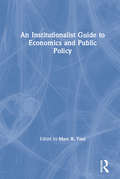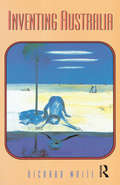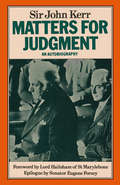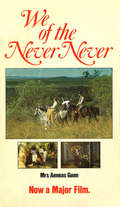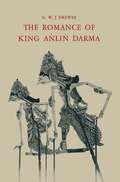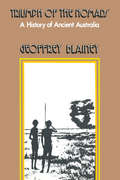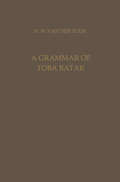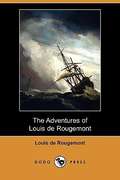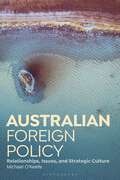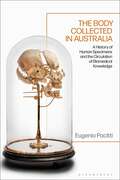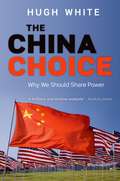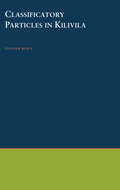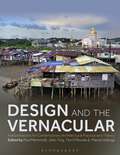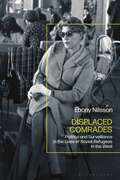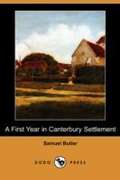- Table View
- List View
An Institutionalist Guide to Economics and Public Policy
by Marc R. ToolThis narrative recounts the 18th and 19th century "shipping out" of Pacific islanders aboard European and American vessels, a kind of "counter-exploring", that echoed the ancient voyages of settlement of their island ancestors.
An Institutionalist Guide to Economics and Public Policy
by Marc R. ToolThis narrative recounts the 18th and 19th century "shipping out" of Pacific islanders aboard European and American vessels, a kind of "counter-exploring", that echoed the ancient voyages of settlement of their island ancestors.
Inventing Australia: Images And Identity, 1688-1980 (Australian Experience Ser. #No. 3)
by Richard White'White sets himself a most ambitious task, and he goes remarkably far to achieving his goals. Very few books tell so much about Australia, with elegance and concision, as does his' - Professor Michael Roe'Stimulating and informative. an antidote to the cultural cringe' - Canberra Times'To be Australian': what can that mean? Inventing Australia sets out to find the answers by tracing the images we have used to describe our land and our people - the convict hell, the workingman's paradise, the Bush legend, the 'typical' Australian from the shearer to the Bondi lifesaver, the land of opportunity, the small rich industrial country, the multicultural society.The book argues that these images, rather than describing an especially Australian reality, grow out of assumptions about nature, race, class, democracy, sex and empire, and are 'invented' to serve the interests of particular groups.There have been many books about Australia's national identity; this is the first to place the discussion within an historical context to explain how Australians' views of themselves change and why these views change in the way they do.
Inventing Australia
by Richard White'White sets himself a most ambitious task, and he goes remarkably far to achieving his goals. Very few books tell so much about Australia, with elegance and concision, as does his' - Professor Michael Roe'Stimulating and informative. an antidote to the cultural cringe' - Canberra Times'To be Australian': what can that mean? Inventing Australia sets out to find the answers by tracing the images we have used to describe our land and our people - the convict hell, the workingman's paradise, the Bush legend, the 'typical' Australian from the shearer to the Bondi lifesaver, the land of opportunity, the small rich industrial country, the multicultural society.The book argues that these images, rather than describing an especially Australian reality, grow out of assumptions about nature, race, class, democracy, sex and empire, and are 'invented' to serve the interests of particular groups.There have been many books about Australia's national identity; this is the first to place the discussion within an historical context to explain how Australians' views of themselves change and why these views change in the way they do.
We Of The Never Never (Classic Ser.)
by Aeneas GunnNewly married, Jeannie Gunn accompanies her husband to 'The Elsey', the huge cattle station in the Northern Territory, several hundred miles from the nearest town. She is one of the few white women in the area and her presence is at first resented by the stockmen until her warmth and spirit win their affection and respect. This is one of the few autobiographies written by a woman to chronicle the life of the pioneers of the outback. In the style of the bush storyteller, Mrs Gunn conveys with moving simplicity the beauty and cruelty of the land, and the isolation and loneliness, comradeship and kindness of the early settlers.
A Grammar of Toba Batak (Verhandelingen van het Koninklijk Instituut voor Taal-, Land- en Volkenkunde)
by Herman Neubronner van der TuukThe Adventures of Louis de Rougemont
by Louis De RougemontLouis de Rougemont (1847-1921) was a would-be explorer who claimed to have had adventures in Australasia. "de Rougemont" was born Henri Louis Grin in 1847 in Suchy, Switzerland. <P> <P> In 1898 he began to write about his invented adventures in the British periodical The Wide World Magazine under the name Louis de Rougemont. He described his alleged exploits in search of pearls and gold in New Guinea and claimed to have spent thirty years living with Indigenous Australians in the Australian outback. He claimed that the tribe with whom he had lived had worshipped him as a god. He also claimed to have encountered the Gibson expedition of 1874. Various readers expressed disbelief in his tales from the start, for example, claiming that no one can actually ride a turtle. He had also claimed to have seen flying wombats. The fact that he could not place his travels on the map aroused suspicion. Readers' arguments in the pages of London newspaper, the Daily Chronicle, continued for months.
Australian Foreign Policy: Relationships, Issues, and Strategic Culture
by Michael O'KeefeHow does Australia's unique geographical, cultural and historical position influence its approach to foreign policy? What key challenges does Australia face on the world stage, and how can it overcome them? Reflecting the messy reality of foreign policy decision-making, this book helps you to understand the changes and continuities in Australia's approach. For example, does the US withdrawal from Vietnam in 1973 and collapse of South Vietnam continue to cast a shadow over Australian foreign policy, or is it relevant only in understanding the dynamics of the cold war? Using an Australian Strategic Culture framework, O'Keefe sheds light on the characteristics that make Australia behave in a way different to any other country and equips you with analytic skills to understand the main debates, such as:- In what sense could Australia be seen as a 'good' international citizen? - Have national interests trumped global responsibilities? - How does the intersection between civil society and public opinion interact with foreign policy making?This book is essential reading if you are a student of Australian foreign policy, as well as of broader Australian domestic politics and international relations.
Australian Settler Colonialism and the Cummeragunja Aboriginal Station: Redrawing Boundaries (First Nations and the Colonial Encounter)
by Fiona DavisIn 1938, the anthropologist Norman Tindale gave a classroom of young Aboriginal children a set of crayons and asked them to draw. The children, residents of the government-run Aboriginal station Cummeragunja, mostly drew pictures of aspects of white civilization boats, houses and flowers. What now to make of their artwork? Were the children encouraged or pressured to draw non-Aboriginal scenes, or did they draw freely, appropriating the white culture they now lived within? Did their Aboriginality change the meaning of their art, as they sketched out this ubiquitous colonial imagery? Australian Settler Colonialism and the Cummeragunja Aboriginal Station traces Cummeragunja's history from its establishment in the 1880s to its mass walk-off in 1939 and finally, to the 1960s, when its residents regained greater control over the land. Taking in oral history traditions, the author reveals the competing interests of settler governments, scientific and religious organizations, and nearby settler communities. The nature of these interests has broad and important implications for understanding settler colonial history. This history shows white people set boundaries on Aboriginal behaviour and movement, through direct legislation and the provision of opportunities and acceptance. But Aboriginal people had agency within and, at times, beyond these limits. Aboriginal people appropriated aspects of white culture including the houses, the flowers and the boats that their children drew for Tindale - reshaping them into new tools for Aboriginal society, tools with which to build lives and futures in a changed environment.
The Body Collected in Australia: A History of Human Specimens and the Circulation of Biomedical Knowledge
by Eugenia PacittiOffering insight into nineteenth- and early twentieth-century medical school dissecting rooms and anatomy museums, this book explores how collected human remains have shaped Western biomedical knowledge and attitudes towards the body. To explore the role Australia played in the narrative of Western medical development, Pacitti focuses on how and why Australian anatomists and medical students obtained human body parts. As medical knowledge circulated between Australia and Britain, the colony's physicians conformed to established specimen collecting practices and diverged from them to form a distinct medical identity. Interrogating how these literal and figurative bones of contention have left an indelible mark on the nation's medical profession, collecting institutions, and communities, Pacitti sheds new light on our understanding of Western medical networks and reveals the opportunities and challenges historic specimen collections pose in the present day.The Body Collected in Australia is a cultural history of collectors and collections that deepens our understanding of the ways the living have used the dead to comprehend the intricacies of the human body in illness and good health.
Classificatory Particles In Kilivila
by Gunter SenftCommon among the world's languages is the phenomenon of classification, a partly or fully grammatical division of the noun lexicon into distinct classes that ultimately derives from the human need to classify and filter data on various levels while communicating. In this book, Senft describes and develops a grammar of classificatory particles in Kilivila, an Austronesian language of the Trobriand Islanders in Papua New Guinea. Drawing largely on his anthropological and linguistic fieldwork in the islands, and emphasizing the use of classifiers in a social context, Senft provides quantitative data and a statistical profile of the status and use of these particles, and the classifier system that employs them.
The Cruise of the Snark
by Jack LondonThe Cruise of the Snark (1911) is a memoir of Jack and Charmian London''s 1907-1909 voyage across the Pacific. His descriptions of surf-riding, which he dubbed a royal sport, helped introduce it to and popularize it with the mainland. London writes: Through the white crest of a breaker suddenly appears a dark figure, erect, a man-fish or a sea-god, on the very forward face of the crest where the top falls over and down, driving in toward shore, buried to his loins in smoking spray, caught up by the sea and flung landward, bodily, a quarter of a mile. It is a Kanaka on a surf-board. And I know that when I have finished these lines I shall be out in that riot of colour and pounding surf, trying to bit those breakers even as he, and failing as he never failed, but living life as the best of us may live it. . from Wikipedia, The Free Encyclopedia. Intuitive navigation. . Text annotation and mark-up. .
Design and the Vernacular: Interpretations for Contemporary Architectural Practice and Theory
Design and the Vernacular explores the intersection between vernacular architecture, local cultures, and modernity and globalization, focussing on the vast and diverse global region of Australasia and Oceania. The relevance and role of vernacular architecture in contemporary urban planning and architectural design are examined in the context of rapid political, economic, technological, social and environmental changes, including globalization, exchanges of people, finance, material culture, and digital technologies. Sixteen chapters by architects designers and theorists, including Indigenous writers, explore key questions about the agency of vernacular architecture in shaping contemporary building and design practice. These questions include: How have Indigenous and First Nations building traditions shaped modern building practices? What can the study of vernacular architecture contribute to debates about sustainable development? And how has vernacular architecture been used to argue for postcolonial modernisation and nation-building and what has been the effect on heritage and conservation? Such questions provide valuable case studies and lessons for architecture in other global regions -- and challenge assumptions about vernacular architecture being anachronistic and static, instead demonstrating how it can shape contemporary architecture, nation building and cultural identities.
Displaced Comrades: Politics and Surveillance in the Lives of Soviet Refugees in the West
by Ebony NilssonThis book explores the lives of left-wing Soviet refugees who fled the Cold War to settle in Australia, and uncovers how they adjusted to life under surveillance in the West. As Cold War tensions built in the postwar years, many of these refugees happily resettled in the West as model refugees, proof of capitalist countries' superiority. But for a few, this was not the case. Displaced Comrades provides an account of these Cold War misfits, those refugees who fled East for West, but remained left-wing or pro-Soviet. Drawing on interviews, government records and surveillance dossiers from multiple continents this book explores how these refugees' ideas took root in new ways. As these radical ideas drew suspicion from western intelligence these everyday lives were put under surveillance, shadowed by the persistent threat of espionage. With unprecented access to intelligence records, Nilsson focuses on how a number of these left-wing refugees adjusted to life in Australia, opening up a previously invisible segment of postwar migration history, and offering a new exploration of life as a Soviet 'enemy alien' in the West.
A First Year in Canterbury Settlement
by Samuel ButlerA First Year in Canterbury Settlement, the earliest book by Butler, is a beautifully narrated tale of a colonial settler. <P> <P> Through journal of the author as a young emigrant, we get a first-hand account of his sea voyage to New Zealand. The vibrant descriptions of flora and fauna of the new land show his keen interest in everything, from exploration of the terrain to sheep-farming. Informative!
From One End of the Earth to the Other: The London Bet Din, 1805-1855, and the Jewish Convicts Transported to Australia
by Jeremy I. PfefferThe emancipation of the Jews of England was largely complete when George III came to the throne in 1760. Free to live how and where they wished, the Jews had been specifically exempted from the provisions of the 1753 Marriage Act which made Christian marriage the only legal option for all others. The effect of this exemption was to put the matrimonial causes of the Jews of England exclusively in the hands of their Rabbis and Dayanim (Jewish ecclesiastical judges) for the next one hundred years. No Bet Din (Jewish ecclesiastical court) anywhere in the world has left such a complete record of its transactions -- matrimonial and proselytical -- as that contained in the extant Pinkas (minute-book) of the London Bet Din from 1805 to 1855. In all other matters, including the offences punishable by transportation, Jews were subject to the jurisdiction of the civil courts. Of the estimated 150,000 convict transportees shipped to the Australian penal colonies, some seven hundred were Jews. Matrimonial and related matters involving twenty of these miscreants are recorded in the Pinkas. Jeremy Pfeffer recounts the history of the London Bet Din during these years as revealed by the Pinkas record and relates the previously untold stories of this group of Jewish convict transportees and their families.
